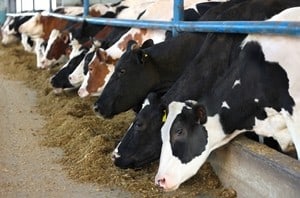Large-animal veterinarians in high demand in rural areas
 As the increasing need for veterinarians in the U.S. continues to be on the rise, the types of animals veterinarians are attending to is beginning to become a more important issue. The U.S. Department of Labor projects that the amount of licensed and practicing veterinarians will increase by 12 percent by 20221, but most of this field will consist of veterinarians who solely work with pets or smaller animals. Reports indicate that the demand for veterinarians who work with larger animals is increasing, primarily due to the fact that there are fewer physicians treating livestock and bigger animals such as horses, bulls and cows today. Those enrolled in veterinary technology courses curious about the current state of large-animal veterinarians will be intrigued to know that rural areas are in dire need of more certified professionals.
As the increasing need for veterinarians in the U.S. continues to be on the rise, the types of animals veterinarians are attending to is beginning to become a more important issue. The U.S. Department of Labor projects that the amount of licensed and practicing veterinarians will increase by 12 percent by 20221, but most of this field will consist of veterinarians who solely work with pets or smaller animals. Reports indicate that the demand for veterinarians who work with larger animals is increasing, primarily due to the fact that there are fewer physicians treating livestock and bigger animals such as horses, bulls and cows today. Those enrolled in veterinary technology courses curious about the current state of large-animal veterinarians will be intrigued to know that rural areas are in dire need of more certified professionals.
Large-animal veterinarians dwindling
While the U.S. Department of Labor reports that there were an estimated 70,300 employed veterinarians in 2012, other figures indicate that only a very small percentage of that number specifically work on treating larger animals. A report published by Harvest Public Media states that the number of large-animal veterinarians makes up around 7 percent of employed veterinarians, and the overall amount of large-animal veterinarians has decreased from just over 5,100 in 2006 to under 5,000 in 2011.2
This decrease is impacting access to veterinary assistance in rural areas, which are dependent on the health of livestock to progress national agriculture production. The American Veterinary Medical Association has released a report that better illustrates which states in particular are in the most need of large-animal veterinarians, including Nebraska, Kansas, North Dakota, South Dakota, Minnesota, Missouri, Oklahoma and Texas. Each of these states has at least five counties with high livestock populations, but no access to veterinarians.3
The biggest risk this lack of large-animal veterinarians poses is the potential of disease infiltrating livestock farms. Not being able to swiftly take action in treating a possible outbreak is a health concern that could devastatingly affect our nation’s food supply. Wyatt Fraas, a project manager for the Center for Rural Affairs, explained to Harvest Public Media how lack of livestock to treat also can impact business for veterinarians.
“Identifying diseases and preventing them is important for the livestock industry everywhere in the world,” Fraas told Harvest Public Media. “We’ve been watching that infrastructure drain as we lose a number of farms. As we lose the number of farms – veterinarians, as any businesses, have to have customers.”
The role of large animal veterinarians
Focusing on more livestock requires a vast knowledge of medical equipment that’s predominantly used to identify and treat various illnesses. Understanding veterinary technology programs is extremely beneficial to this position, as there are many instances where use of instruments and devices come into play, such as X-rays, ultrasounds, providing vaccinations and more. As previously noted, the need for large-animal veterinarians continues to increase, and the job itself is certainly a lucrative position. The U.S. Department of Labor estimates the average annual salary of a veterinarian is just over $84,000 a year, a number that could continue to increase as demand remains high throughout the U.S. With such a need for large-animal veterinarians throughout rural areas in the country, there are plenty of opportunities for upcoming graduates to thrive within this job market.
1 http://www.bls.gov/ooh/healthcare/veterinarians.htm#tab-1
2 “Wanted: Large-animal veterinarians willing to work in rural areas,” Abbie Fentress Swanson, Harvest Public Media, Jan. 3, 2013. http://harvestpublicmedia.org/blog/1569/wanted-large-animal-veterinarians-willing-work-rural-areas/5#.VVnyZvlViko